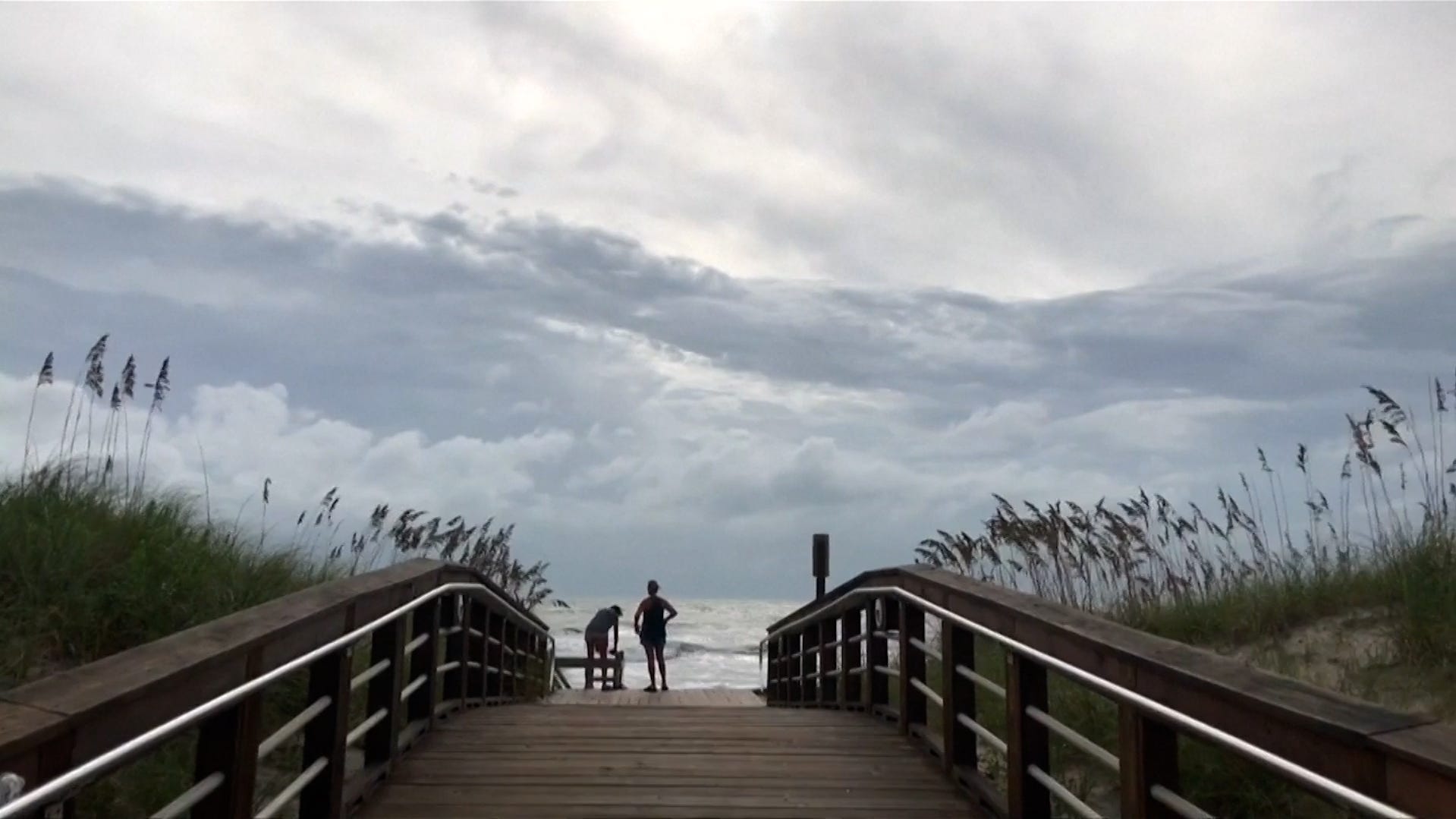Hurricane Flossie tracker: See projected path of storm

Hurricane Flossie has formed in the Eastern Pacific and continues to strengthen off the coast of southwestern Mexico, according to the National Hurricane Center.
Hurricane center forecasters said early Tuesday morning, July 1, Flossie is located about 155 miles south-southwest of Manzanillo, Mexico with maximum sustained winds near 85 mph with higher gusts, making it a Category 1 hurricane on the Saffir-Simpson Hurricane Wind Scale.
The hurricane center forecasts "steady to rapid strengthening" during the next day or so, with weakening starting by late Wednesday.
Flossie is forecast to move farther away from southwestern Mexico Tuesday, the NHC said, however is still expected to produce rainfall totals between 2 to 6 inches across portions of the Mexican states of Guerrero, Michoacán, Colima, and Jalisco through Wednesday, which could lead to life-threatening flooding and mudslides.
Additionally, swells generated by Flossie are expected to cause life-threatening surf and rip current conditions off the coast of southwestern Mexico, the hurricane center said.
Hurricane Flossie tracker
This forecast track shows the most likely path of the center of the storm. It does not illustrate the full width of the storm or its impacts, and the center of the storm is likely to travel outside the cone up to 33% of the time.
Hurricane Flossie spaghetti models
This forecast track shows the most likely path of the center of the storm. It does not illustrate the full width of the storm or its impacts, and the center of the storm is likely to travel outside the cone up to 33% of the time.
NHC keeping tabs on system off the southeast U.S. coast
A frontal boundary is expected to stall and weaken off the southeast U.S. coast late this week, according to the National Hurricane Center.
An area of low pressure could develop from the weakening front by the weekend off the southeast U.S., over Florida, or over the eastern Gulf.
Some gradual tropical or subtropical development could occur thereafter as the low moves little.
"This system poses no direct threat to Florida over the next 5-7 days; however, this system could bring locally heavy rainfall, gusty winds and an increased rip current risk along the Gulf or Atlantic Coast later this week and will continue to be monitored closely," the Florida Department of Emergency Management said.
How do hurricanes form?
Hurricanes are born in the tropics, above warm water. Clusters of thunderstorms can develop over the ocean when water temperatures exceed 80 degrees Fahrenheit. If conditions are right, the clusters swirl into a storm known as a tropical wave or tropical depression.
A tropical depression becomes a named tropical storm once its sustained wind speeds reaches 39 miles per hour. When its winds reach 74 mph, the storm officially becomes a hurricane.
Prepare now for hurricanes
Delaying potentially life-saving preparations could mean waiting until it’s too late. "Get your disaster supplies while the shelves are still stocked, and get that insurance checkup early, as flood insurance requires a 30-day waiting period," NOAA recommends.
- Develop an evacuation plan: If you are at risk from hurricanes, you need an evacuation plan. Now is the time to begin planning where you would go and how you would get there.
- Assemble disaster supplies: Whether you’re evacuating or sheltering-in-place, you’re going to need supplies not just to get through the storm but for the potentially lengthy aftermath, NOAA said.
- Get an insurance checkup and document your possessions: Contact your insurance company or agent now and ask for an insurance check-up to make sure you have enough insurance to repair or even replace your home and/or belongings. Remember, home and renters insurance doesn’t cover flooding, so you’ll need a separate policy for it. Flood insurance is available through your company, agent, or the National Flood Insurance Program. Act now, as flood insurance requires a 30-day waiting period.
- Create a family communication plan: NOAA said to take the time now to write down your hurricane plan, and share it with your family. Determine family meeting places, and make sure to include an out-of-town location in case of evacuation.
- Strengthen your home: Now is the time to improve your home’s ability to withstand hurricane impacts. Trim trees; install storm shutters, accordion shutters, and/or impact glass; seal outside wall openings.
Contributing: Cheryl McCloud, Paste BN Network-Florida
Gabe Hauari is a national trending news reporter at Paste BN. You can follow him on X @GabeHauari or email him at Gdhauari@gannett.com.